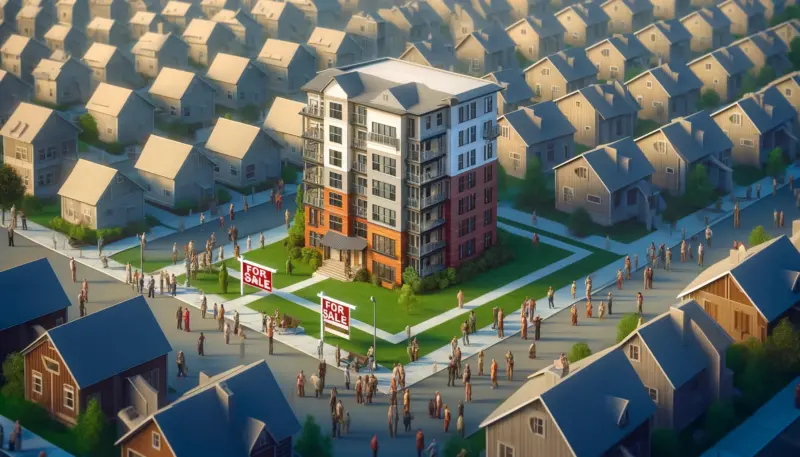From 40 Hours to 40 Seconds? Generative AI in Architecture Will Disrupt How Architects Bill Their Hours.
The advent of AI is revolutionizing industries across the board, and the realm of design, architecture, and engineering is no exception. In the age of AI, the future of these industries may well be marked by major shifts that occur sooner than we might anticipate. How should architects begin to adapt to generative AI in architecture?
In the construction industry, architects are using generative AI tools like Stable Diffusion, Midjourney, and DALL-E to create adaptable conceptual images for projects. ALICE Technologies, for example, a construction optioneering platform, is utilizing generative AI for construction scheduling, offering multiple schedule possibilities and “what if” scenarios to optimize time and costs. Another example is the application of AI models like GPT-4 in drafting specifications for construction projects, traditionally a laborious task involving significant man-hours.
Paul Doherty, award-winning architect, internationally renowned smart city expert, and Founder & CEO of the digit group, gives his take on where generative AI in architecture will disrupt traditional work flows and business models in the industry. His first bet? Billable hours.
Paul’s Thoughts
“So here’s the thing. With AI in the world of design, architecture, engineering, there’s going to be some certain tsunami events that are going to come faster rather than later. A lot of that has to do with the use of things like GPT-4 in its creation of tools like specifications that are part of the construction documents process.
We did an experiment of having a professional spec writer do a series of writing that took about 40 hours to create a 100,000 square foot typical suburban office park type of building. We actually put that into GPT-4 after doing a little bit of training. In other words, we put a master format type of framework into it, we wanted it in that type of order. And instead of 40 hours, they come up with a specification that was quite good in 42 seconds. This is a big deal because billable hours is what the design and construction industries are used to with architects and engineers. They’re going to have to revalue what they do when they start to bill out because it’s no longer billable hours because we’re talking 42 seconds. How do you bill against that? And as owners and others in the industry realize that it’s no longer about the time but the value of what you’re bringing, that’s going to be a watershed moment.
I would suggest that the architects and engineers, especially in the United States, reassess how they bill out. This is no longer about doing drawings and doing specs with the amount of hours and minutes that you put into it. That goes away with AI. What’s going to happen, in my opinion, is that we should be looking at other industries like the music industry where they take an approach of publishing rights and that’s how they make money. It’s not so much how many downloads people do or if you’re on tour, it’s the publishing rights. Meaning that every time something’s played in the case of design and construction, every time something is accessed for things like design and construction and facility management, that’s I think where the sweet spot is going to be.
With AI, with graphics, what I’m really, really pleased with, with the generative way of how you can start to take things like DALL-E and Midjourney and put prompts in place to get to a four deliverables that you can now start to build upon. Instead of having a million choices, how about the best four? It brings you about 65, 70% there, but that’s a lot better than starting from scratch.”
Article written by Daniel Litwin.
Recent Posts

As the construction industry navigates the complexities of sustainability and economic pressures, the role of galvanized steel has become increasingly pertinent in sustainable architecture. This material, celebrated for its durability and low environmental impact, is gaining attention amid global steel market fluctuations and rising demands for sustainable building practices. With significant shifts in manufacturing…

As Nashville grapples with an explosive growth in population and a consequent strain on its housing market, the city is witnessing a shift from traditional single-family homes to more space-efficient multifamily units. This transition reflects a broader trend seen across various neighborhoods, with places like Germantown experiencing a significant 37.1% rise in home prices…

Spatial computing, Wi-FI, and other technology advancements are bringing the promise of connected living to new and exciting possibilities. Smart cities are becoming a reality in urban development, driven by technologies like 5G, AI, IoT, and blockchain. These advancements promise to transform urban living into greener, more efficient, and inclusive spaces, addressing challenges like…



